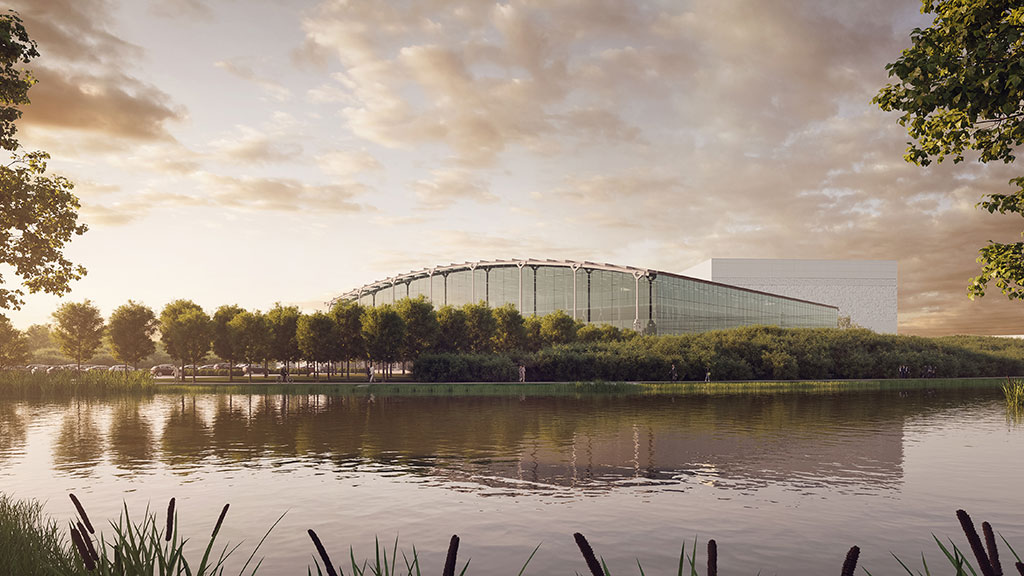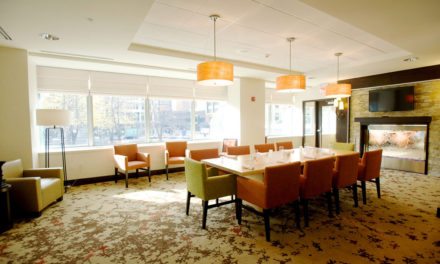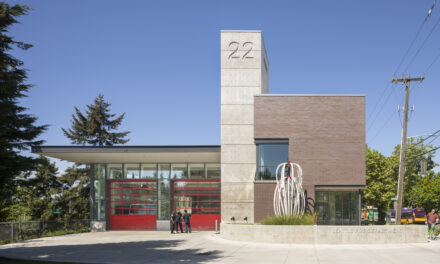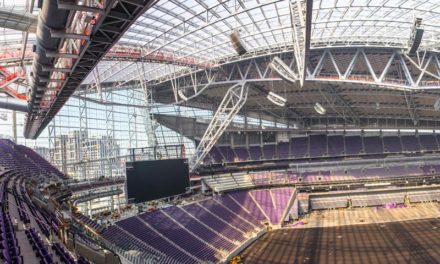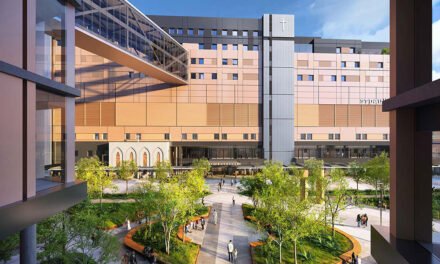The Library and Archives Canada (LAC)’s new preservation facility in Gatineau, Quebec brought a challenge that felt both patriotic and historically important — preserving the documentary heritage of Canada.
This facility, scheduled to open in 2022, is located adjacent to LAC’s existing Preservation Centre and will store six vaults containing archival records from Canada. The ultra-modern facility will be the first net zero carbon building dedicated to the preservation of archives in the Americas, and it will also be the first Government of Canada building to meet the requirements of the Greening Government Strategy.
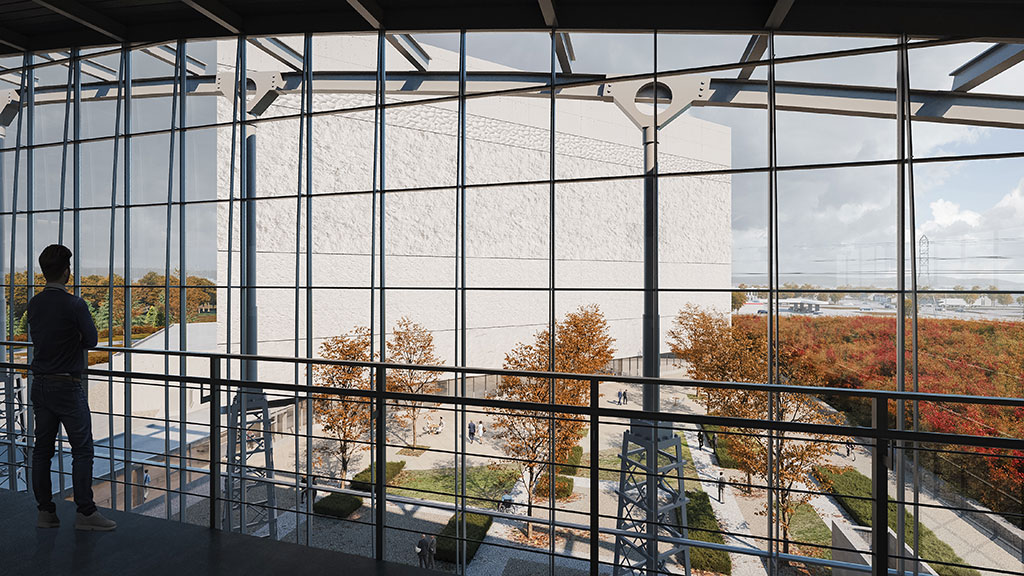
A rendering that shows what Library and Archives Canada’s new preservation facility will look like from inside the existing Preservation Centre. (B+H Architects)
Stantec is providing professional services to PCL Construction—as part of a public-private-partnership team named Plenary Properties Gatineau, and in collaboration with B+H Architects—on this state-of-the-art project. It will be the world’s largest preservation facility equipped with the advanced technology of an automated storage and retrieval system for archival materials.
There’s a lot of distinct engineering that goes into a preservation facility like this one—that reflects LAC’s objective of protecting materials for 500 years. This building will set a global standard in many ways and is comprised a variety of important elements to consider:
Protection of the collection
All design work should keep this important objective in mind: the protection of the documentary heritage collection. Usually, engineering work focuses on the protection of people. But in this case, the building’s main “occupants” will be paperwork, films, and other archival materials. It’s vital to ensure the facility is safe for people and the heritage collection. When it comes to protecting the collection, here are some key points that come to mind:
- Climate and dust control: To protect the collection, you first need to set very stringent air temperature and humidity setpoints. That temperature and humidity control needs to be stable and controlled, like in a scientific lab. For the new preservation facility, the temperature and humidity conditions need to cover a volume of near 20,000 m3. This controlled environment requires specialized dehumidification equipment like desiccant wheels. Second, it’s important to arrange for dust control, to reduce airborne contaminants. And third, other outside air contaminants, such as ozone must be limited. All climate and dust control HVAC equipment must offer robustness by presenting an N+1 redundancy capacity, which means that a facility has an additional component that can be used in case of maintenance or failure.
- Fire protection and detection: Fire represents the ultimate risk for the collection. So, the building needs a full sprinkler system. However, a burst sprinkler head or pipe represents a serious risk to the collection. Therefore, a pre-action sprinkler system—where the pipes are dry and hold water back using an electronic valve—can protect all areas where the collection is stored and accessed. Once a fire is detected, the valve opens and water replaces nitrogen, which is compressed to the pipe ends. Traditionally, double interlock pre-action systems are used to protect such important items. With the size of the collection vaults at the LAC new preservation facility, this type of system created a lengthy water delivery delay to the vault – representing a potential additional hazard. Our fire-protection team went directly to the ultimate authority, the National Fire Protection Association (NFPA), which advised that we use a single interlock pre-action system. With a height of near 29 metres, the storage vaults are almost 50% higher than the maximum design standard issued by the NFPA. Our team had to go beyond the standards. In complement to this single interlock system, the team elected to use VESDA fire detection—aka laser-based smoke detection—to give the system the best possible reaction time.
- Emergency power generation and distribution: This is another important point. To make sure that the climate control and dust control—as well as the fire protection and detection—are always functional, a facility needs to be covered by an emergency power generation plant and adequate distribution. For the LAC new preservation facility, the robustness criteria for the emergency power generation plant was also an N+1 redundancy but applied to 200% of the calculated building load. Our team elected to use building energy simulations to refine the emergency power plant size. This was made possible by the fact that the building is using electricity for 100% of its energy needs (Hydro-Québec’s electricity is recognized as carbon neutral).
- Prohibited material: A preservation facility shouldn’t contain building materials that could present a long-term danger to the collection. Gypsum board and wood are common in construction, but you can’t use gypsum wall or wooden elements near the collection because of the amount of dust they create over the years. The wall finishes need to be concrete instead. You also need to find an alternative material for HVAC acoustic treatments and a different solution for room reverberation time (noise control), as typical solutions like glass or rock fiber aren’t appropriate here.
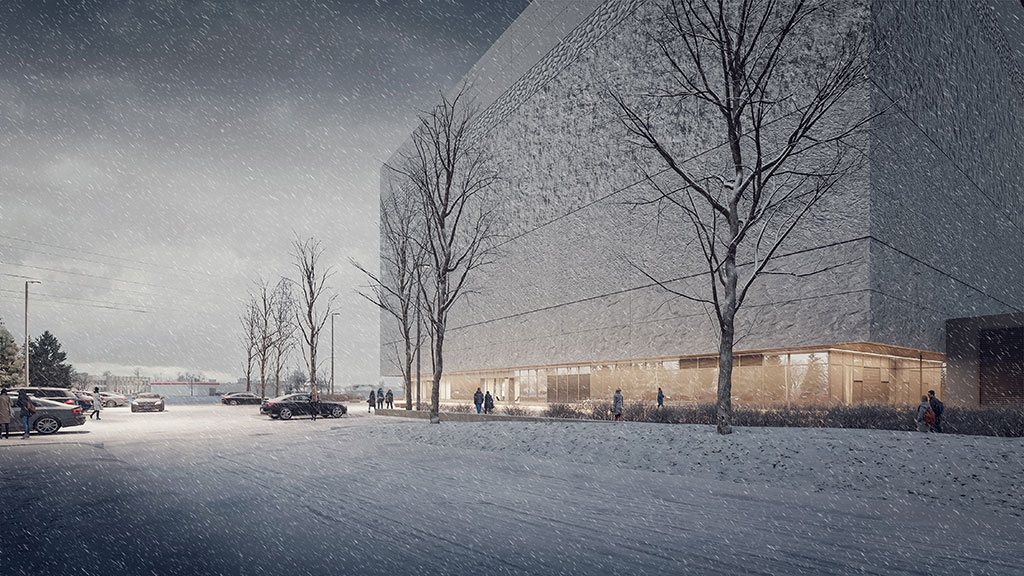
A rendering that provides a winter glimpse at Library and Archives Canada’s new preservation facility in Gatineau, Quebec. (B+H Architects)
Automatic storage and retrieval system
LAC’s new preservation facility will use an automated storage and retrieval system (ASRS) for archival materials. This building will be the world’s largest preservation facility to utilize an ASRS, and it’s important to be aware this system if you’re considering a project like this one.
This 90-foot-tall, high-density storage system, created by intralogistics company Dematic, presents several benefits. They include a decreased risk of material damage, enhanced tracking, and reduced energy consumption. Retailers have started using these systems for their storage facilities. For a preservation facility, adding an ASRS reduces the amount of time that people interact with the collection, which lessens the chance that someone could damage heritage materials by dropping a box, for example.
On this project, the ASRS will incorporate six robots, all customized with vertical conveyance. The robots take collection materials from visiting trucks and store the materials up to 90 feet in the air.
Uniqueness of design
This project’s uniqueness means that we’ve often had to establish new technical limits for our design. We’ve gone above and beyond standards—like ensuring we had proper fire protection for such great heights or finding new areas for piping to keep water out of certain rooms—because existing standards don’t reach the limits we need.
When contemplating a large facility like this to preserve important heritage materials, there are critical decisions to make.
About the author
 Martin Carreau
Martin Carreau
Senior Principal/Stantec
Motivated by the need to innovate and continually improve his work, Martin strives to establish strong collaboration between clients and contractors. He is involved in many public-private partnership (P3) projects. He constantly adapts the practices developed in project management through systematic adoption of the most recent PMBOK recommendations. These provide better management of client expectations while simplifying the coordination of tasks among the designers and contractors.

